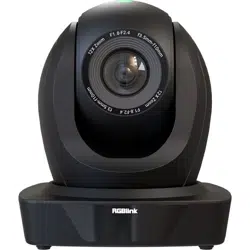Loading ...
Loading ...
Loading ...

RGBlink vue PTZ camera User Manual
46
● HDMI 2.1 : released on November 28, 2017. It adds support for higher resolutions and higher refresh rates, Dynamic
HDR including 4K 120 Hz and 8K 120 Hz.
● DisplayPort: A VESA standard interface primarily for video, but also for audio, USB and other data. DisplayPort (orDP)
is backwards compatible with HDMI, DVI and VGA.
● DP 1.1: was ratified on 2 April 2007, and version 1.1a was ratified on 11 January 2008. DisplayPort 1.
1
allow a
maximum bandwidth of 10.8 Gbit/s (8.64 Gbit/s data rate) over a standard 4-lane main link, enough to support
1920x1080@60Hz
● DP 1.2: introduced on 7 January 2010, effective bandwidth to 17.28 Gbit/s support increased resolutions, higher
refresh rates, and greater color depth, maximum resolution 3840 × 2160@60Hz
● DP 1.4: publish on 1 Mar, 2016.overall transmission bandwidth 32.4 Gbit/s ,DisplayPort 1.4 adds support for Display
Stream Compression 1.2 (DSC), DSC is a "visually lossless" encoding technique with up to a 3:1 compression ratio. Using
DSC with HBR3 transmission rates, DisplayPort 1.4 can support 8K UHD (7680 × 4320) at 60 Hz or 4K UHD (3840 × 2160)
at 120 Hz with 30 bit/px RGB color and HDR. 4K at 60 Hz 30 bit/pix RGB/HDR can be achieved without the need for DSC.
●Multi‐mode Fiber: Fibers that support many propagation paths or transverse modes are called multi-mode fibers,
generally have a wider core diameter and are used for short-distance communication links and for applications where
high power must be transmitted.
●Single‐mode Fiber: Fiber that support a single mode are called single-mode fibers. Single-mode fibers are used for
most communication links longer than 1,000 meters (3,300 ft).
●SFP : small form-factor pluggable , is a compact, hot-pluggable network interface module used for
both telecommunication and data communications applications.
●optical fiber connector: terminates the end of an optical fiber, and enables quicker connection and disconnection
than splicing. The connectors mechanically couple and align the cores of fibers so light can pass. 4 most common types
of optical fiber connectors are SC, FC, LC,ST.
●SC:(Subscriber Connector), also known as the square connector was also created by the Japanese company – Nippon
Telegraph and Telephone. SC is a push-pull coupling type of connector and has a 2.5mm diameter. Nowadays, it is used
mostly in single mode fiber optic patch cords, analog, GBIC, and CATV. SC is one of the most popular options, as its
simplicity in design comes along with great durability and affordable prices.
● LC:(Lucent Connector) is a small factor connector (uses only a 1.25mm ferrule diameter) that has a snap coupling
mechanism. Because of its small dimensions, it is the perfect fit for high-density connections, XFP, SFP, and SFP+
transceivers.
● FC :(Ferrule Connector) is a screw type connector with a 2.5mm ferrule. FC is a round shaped threaded fiber optic
connector,mostly used on Datacom, telecom, measurement equipment, single-mode laser.
● ST: (Straight Tip) was invented by AT&T and uses a bayonet mount along with a long spring-loaded ferrule to support
the fiber.
Loading ...
Loading ...
Loading ...
